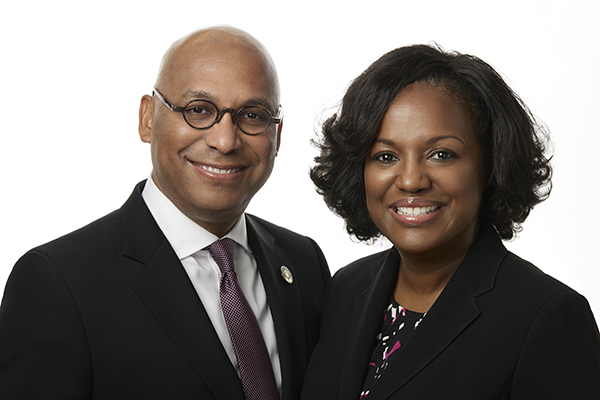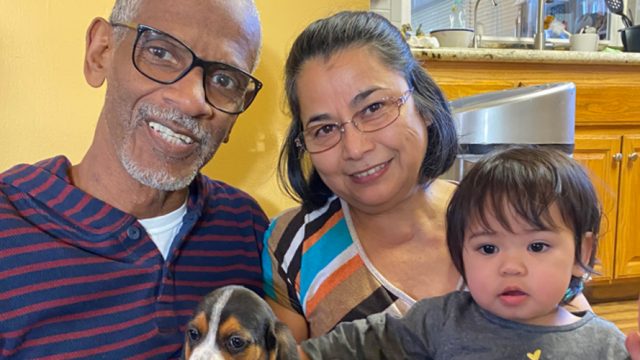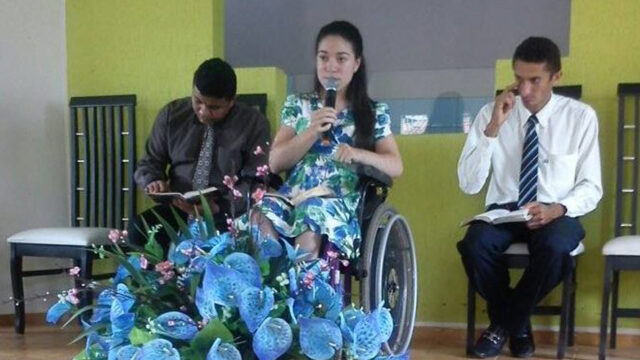How to talk to your children about racism

The traumatic killing of George Floyd—a Black man—by a White police officer—Derek Chauvin—in Minneapolis, Minesota, on May 25, 2020, prompted angry protests around the world and dominated conversations about race and racism in private and public spaces everywhere. While much of this conversation is often uncomfortable, Christian parents have at once the responsibility and an exceptional opportunity to teach their children how to appreciate the beautiful diversity of all God’s children.
Discussions about race are difficult for most adults and even more difficult to talk about with children. Yet, Christian parents must find ways to discuss this important topic with their children as they’re growing up, because they will learn from their spoken and unspoken messages. For what parents say is as important as what they don’t say; just as what they do is as significant as what they don’t do, communicating what is highly valued in their homes.
Talking to Children About Racial Bias
To be sure, the tragic and racially charged event referenced above left many parents—especially parents of color—wrestling with their own emotions, their hopes for their children’s future, and the challenge to help them blossom in a world rife with racial discrimination. Yet, if parents had a better understanding of how racial bias impacts children and had strategies in place to assist them in dealing with and reacting to racial differences, they would manage with greater ease the unrest experienced during the past several weeks.
How Children Learn Racial Bias
From a very early age, children tend to learn about racial differences and racial bias from their first teachers—their parents—and how to deal with and react to these differences. Learning about racial bias is similar to learning a new language. For example, we know that children raised in a bilingual setting learn their second language more easily than a monolingual speaker who begins to learn a second language in junior high. A critical early learning period is determined by biology. And in some equivalent way, learning well about racial bias becomes much harder if that learning takes place at a later time.
As early as 6 months, a baby’s brain is able to detect race-based differences.
By ages 2 to 4, children are able to internalize racial bias.
By age 12, many children become set in their beliefs—giving parents a decade to shape the learning process so that it diminishes racial bias and increases cultural understanding.
In much the same manner as learning a new language is easier when one is immersed in the environment where the language is spoken, children exposed to society will gain fluency in racial bias even if their parents do nothing.
Strategies to Help Children Deal With Racial Bias
Three highly important strategies parents may employ to help their children deal with racial bias are:
- Talk to your children and acknowledge that racial distinctions and bias exist.
- Confront your own bias and model how you want your children to behave in response to others who may be different from they are.
- Encourage your children to challenge racial stereotypes and racial bias by being kind and compassionate when communicating with people of all racial, ethnic, and cultural groups.1
When parents model empathy, compassion, and kindness to others—regardless of their race, ethnicity, caste, or tribe—they send a powerful and character-developing message to their children against the powerful evil they cannot help seeing. On May 25, 2020, something terrible and evil happened on the streets of Minneapolis, Minnesota. It was all caught on camera for the world, including the world’s kids, to see again and again in nonstop cable news broadcasts around the world. Our kids saw a man abused in public and die at the hands of an authority figure whose job it was to protect the citizenry and foster peace. At such times, kids need to be able to reference some awesome good—empathy, compassion, and kindness at least as powerful as the evil they’ve witnessed.
Children Are Listening
Musing about multiple racially charged incidents that fueled a recent global outcry, Ella Simmons challenges the response to such atrocities by some professed Christians. She exclaims: “How can this be? I ask this of all of us who consider ourselves converted and reasonably mature spiritually. How can we claim justification and sanctification in Jesus Christ and turn a deaf ear and a blind eye to racism and its ravages in any form?”2
And Ellen White reflects: “The Lord Jesus came to our world to save men and women of all nationalities. He died just as much for the colored people as for the white race. Jesus came to shed light over the whole world. . . . He loves them all, and makes no difference between white and black.”3
Considering these thought-provoking realities, Christian parents are aptly positioned to seize this historically significant moment that has met us. As compassionate Christian parents we can guide our children to a preferred future in interracial relationships. We know full well that our children of almost every age are hearing about what is taking place in the society around them. Chances are they are overhearing adult conversations, watching footage of a video on YouTube, or watching news coverage of peaceful and violent protests. It’s safe to assume they may feel afraid for their own safety or their family’s safety. They might have questions about what the protests mean, why people have been killed by police, and whether they are safe.
How to Help Your Children Understand
If at all possible you should talk with your children in ways they’re able to understand, before waiting for them to hear about what’s happening from other people or other sources. When you talk to your children, keep the following points in mind:
Check in with your child. You may want to ask your children what they know, what they’ve seen, and how they’re feeling. Tell them you understand how they may be feeling and validate the feelings and emotions they may be experiencing. You know your child/children best and what information they can handle. When dealing with younger children, take the time to patiently share with them what you’re doing to keep your family safe. When dealing with pre-teens and older children, ask if they’ve ever experienced ill-treatment or racism, or if they’ve experienced it happening to someone else.
Watch for changes in your child’s behavior. Some children may become more hostile, while others may become inhibited or fearful. If you’re concerned that your child may be having a difficult time with anxiety, fear, or distress, call your pediatrician or mental health provider for added support.
Limit what your child sees in the media. Avoid leaving the TV on in the background. With older children and teens, you should watch with them and talk together about what you’re seeing. Give careful attention to their observations, and share your own perspective on what’s taking place. Use commercial breaks or pause the video to have brief discussions about what you’re watching or have just witnessed on TV. With younger children, limit TV watching and smartphone or tablet use, especially when the news is on. Make sure that whatever media they are consuming is occurring in the common areas of your home where you can easily and readily check on them.
Be aware of your own emotions. As an adult it’s vital to tune into how you’re feeling and ensure that you’re OK. If you’re not doing well or are unable to cope, ask for help to deal with the trauma and emotional shock the events and images may be having on you. Also, make a list of your own coping strategies, and when you need to employ them, check with your list.
Use this teachable moment. This is a good opportunity for families of every race to discuss the history of racism and discrimination in the country they’re living in and decide as a family how they may get involved to be agents of change in their society.
Take advantage of the right resources—good resources can help. If you find yourself having difficulty finding the right words to share with your children during these times, don’t be afraid to use good books or other resources that might help you communicate effectively about this topic with your children. The tips shared above may also be helpful. This is a good time to remind your children that no one is perfect. Also discuss what you’ve learned during this time of unrest and what you can do as a family to step up your efforts to not only say you’re not racist but to be anti-racist.
Talk and Act
It’s OK to admit that people are treated differently based on the color of their skin, their ethnicity, their caste, their tribe, their gender, or where they might live, and give examples of where this is currently happening, if you know. This is also a prime opportunity to show your children how to make a positive difference. For example, your family may decide to be proactive by pursuing how your church or other institution deals with differences. You may also decide to call your city council person or superintendent of schools or some other local politician to advocate for issues faced by communities of color or people groups marginalized because of their ethnicity, caste, or tribe. Challenge your own biases, and share with your children how you would like them to treat people who are from a different country, culture, race, tribe, or social class.
Remember
These are the kinds of conversations many Black American families have had for years. Nevertheless, if this isn’t something your family has discussed as yet, recent racial unrest around the world may be used as a teachable moment. The truth is, if there’s going to be progress anywhere in the world where racial, ethnic, caste, or tribal inequality prevails—even if that place is our church or school—it will be because we help our children, adolescents, and young adults learn not just that racism and inequality exist, but that all of us can work together to dismantle them.4 This is especially important for people who represent Jesus Christ.
As Jesus declares: “By this all will know that you are My disciples, if you have love for one another” (John 13:35, NKJV).5 Christian parents working through the power and grace of God to raise their children for healthy interracial relationships may become the catalyst for transformation in our homes, churches, and institutions. Such a reality will create spaces filled with harmony, reconciliation, and peace branded by the inestimable and unshakable love of God.
This is our prayer for every family who sincerely wants to represent Jesus Christ.
1 Ashaunta Anderson and Jacqueline Dougé (June 25, 2020), “Talking to Children About Racial Bias,” American Academy of Pediatrics, healthychildren.org, retrieved August 13, 2020.
2 Ella S. Simmons, “Love Is an Action Word,” Adventist Review, July 2020, p. 22.
3 Ellen G. White, Selected Messages (Washington, D.C.: Review and Herald Pub. Assn., 1958), book 2, p. 487.
4 Nia Heard-Garris and Jacqueline Dougé, J. (June 1, 2020), “Talking to Children About Racism: The time Is Now,” American Academy of Pediatrics, healthychildren.org, retrieved August 13, 2020.
5 Texts credited to NKJV are from the New King James Version. Copyright ã 1979, 1980, 1982 by Thomas Nelson, Inc. Used by permission. All rights reserved.








